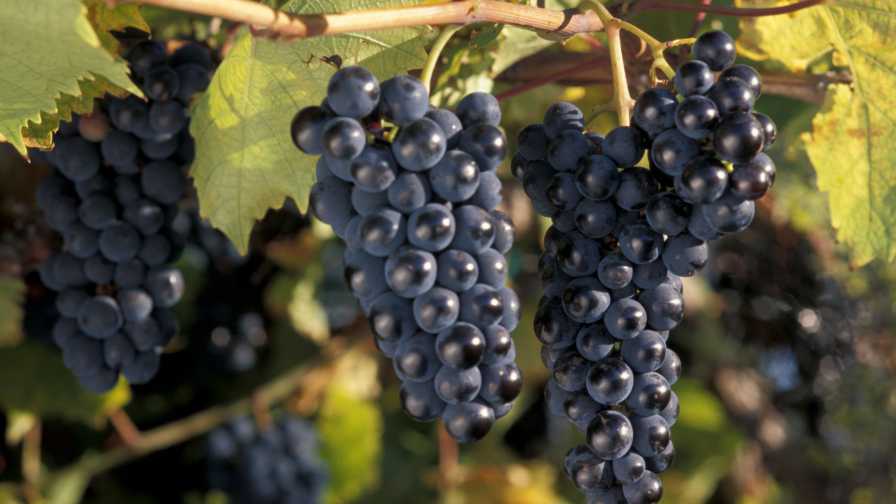A Food Safety Plan For Cantaloupe

The fall of 2011 was a dark time for the U.S. cantaloupe industry. FDA had found Listeria monocytogens in cantaloupe samples collected from a grower in Colorado. In the end, a total of 33 people died as a result of eating tainted fruit.
Â
A similar situation occurred in the summer of 2012. This time cantaloupe was infected with Salmonella traced back to a grower in Indiana. Numerous people became ill and three people died.
Addressing the problem and with the goal of offering consumers the safest cantaloupe possible, a group of industry personnel and growers got together in the fall of last year and formed the Eastern Cantaloupe Growers Association (ECGA). Forming an association honing in on food safety appears to be a good move because at the end of February, FDA announced its intention to inspect cantaloupe packinghouses across the U.S. during the 2013 growing season.
American Vegetable Grower had a chance to catch up with Charles Hall, who is the executive director of the ECGA as well as the executive director of the Georgia Fruit & Vegetable Growers Association, to find out more about the new group and its plans moving forward.
• How did the Eastern Cantaloupe Growers Association come to be?
Charles Hall: The cantaloupe industry began looking at how it can respond to some of the concerns that consumers and retailers have with regard to the industry. We had a number of growers in Georgia, Indiana, and North Carolina that came together and said, “We would like to do something to restore confidence in the industry.�
We started talking about what we can do, and the group that came together decided that a trade association that had specific food safety guidance would be the best and quickest way for these growers coming together to identify themselves as far as being able to provide stronger food safety standards.
We took the national (cantaloupe) food safety guidance document, and in the fall of 2012, we went through it item by item and determined if it met the eastern cantaloupe growers’ needs. (Editor’s Note: ECGA’s food safety guidance is based on the Commodity Specific Guidelines for the Production, Harvest and Post Harvest Handling of Cantaloupes created by the National Cantaloupe Guidance, which can be found here: www.cantaloupe-guidance.org.)
For example, was this guidance something our growers could do differently than what was being recommended, and were there steps that we could take to go over and above what was in the guidance document?
From September through November, we worked with a technical group, growers, and the growers’ their food safety directors to come up with what we are calling the Eastern Cantaloupe Growers Association guidance document. The basis of it is the national guidance document but there are other items that are in addition to the national guidance document.
We then began to put together membership classifications and how everything will pull together. The association has been incorporated, we have an organizing board of directors, officers have been elected, and Bill Brim, co-owner of Lewis Taylor Farms in Tifton, GA, is the president of the association. We are now moving forward and certifying members under the criteria the board of directors has established.
• What does it take to become a certified member of the ECGA?
Hall: Our website, www.ecga-usa.org, contains our food guidance document, and, as stated previously, it is very similar to the national document. We want to stress that — as there could be confusion in the industry — we use the national guidance document as the basis. The national guidance document is an excellent document for growers to follow, but we also see there are a few opportunities to go above the national guidance and that is what we are doing.
With regard to becoming a certified member within the ECGA, there are three criteria that have to be met:
1. Growers have to pass the Global Food Safety Initiative (GFSI) audit.
2. Growers have to adhere to the ECGA rider to the GFSI audit that has an additional item for Salmonella and Listeria. (See “Above And Beyond� sidebar.) For example, with regard to water testing, growers have to test the water before production starts and the water has to be tested each month after that until harvest is finished. There also is a matrix in place for flooding should the field be flooded prior to harvest, and if there is a possibility of pathogen contamination, the grower has to wait 60 days wait until the cantaloupes can be harvested.
3. The last item is growers have to agree to an unannounced mini audit during the harvest season where an auditor will come in to audit two or three items (that are part of the GFSI audit) in the packing facility or in the field during harvest. We don’t want the mini audit to be imposing, and that is why we say it is a mini audit. The surprise audit is an additional step of assurance to the retailer that we are confident in our practices and that if auditors come in in the middle of the season, they won’t find unsafe practices going on.
• What are the overarching goals of the group?
Hall: What we hope will happen is that the buyers, retailers, and foodservice companies will look at the standards that ECGA has in their membership and will follow suit and require their cantaloupe suppliers to meet the standards. The membership is not exclusive as long as the grower can meet the standards set by ECGA. Any eastern cantaloupe grower can be a member.
We are just trying to establish standards that retailers can take comfort in. While we can’t protect everything from a foodborne illness standpoint, with the standards we are putting these growers under, it is less likely there will be a problem. Nothing is 100% these days.
• What are the potential benefits of being involved with the group?
Hall: I think the potential benefit will be that retailers will look at this as a positive step and will look to those ECGA growers who are certified as a very reliable source for melons. We have had retailers tell us that because of the concern about the safety of cantaloupes they aren’t going to buy from anybody unless they have ECGA certified membership.  Â
• What is the plan for the association moving forward?
Hall: At this point, we are promoting membership. We have about 10 growers who have applied to be a certified member at this time but hope to have 40 to 50 grower members by the time the season gets in full swing. We are working through the paperwork to get the certification documented, and we need copies of each growers’ GFSI audit.
The farms that are certified will be published on the website, so a retailer can go to the website to see who is a certified grower from ECGA. In addition, if retailers would like us to, we will put their names on the website indicating that they are buying from ECGA growers.
Moving forward, we will continue to get the information out. We hope at some point down the road there will be some additional marketing benefit with promotional materials. As this is the first year, we need to make sure we have the food safety component of this in place, and then we will start to look at promotion. Research also is critical to as we continue to get better science as far as what works and what doesn’t work from a food safety standpoint.
Â









